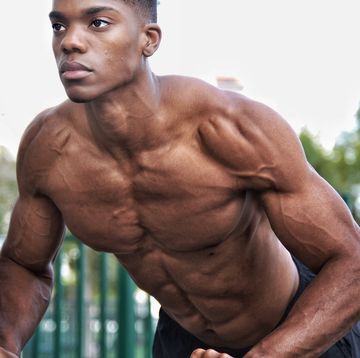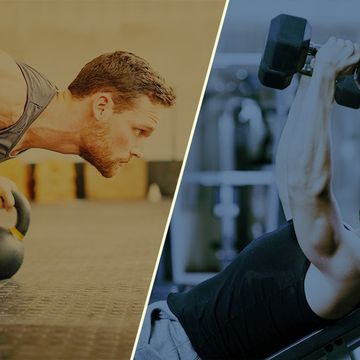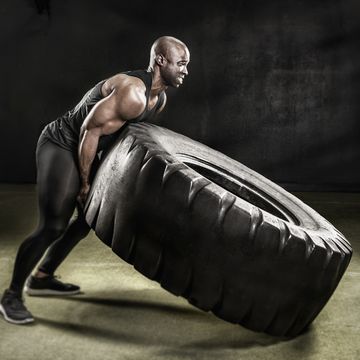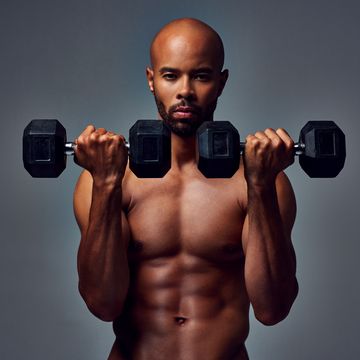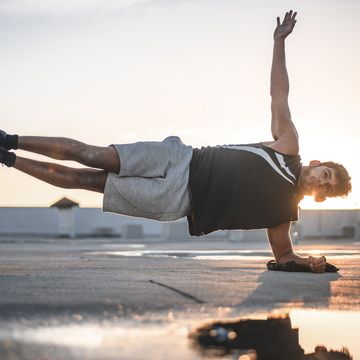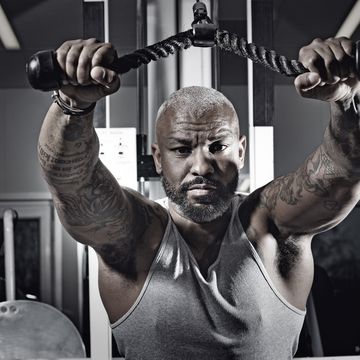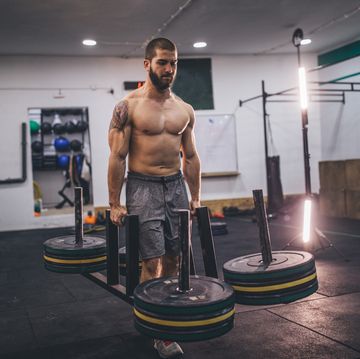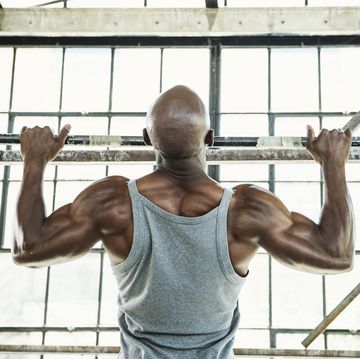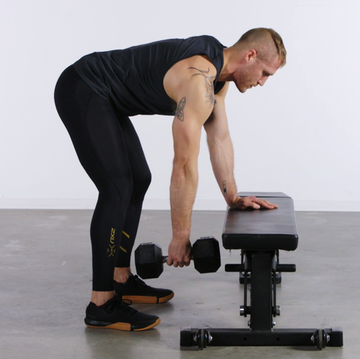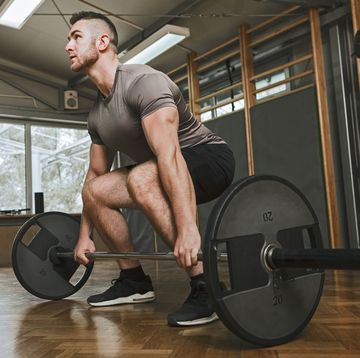You've done rows before. But never like this.
The classic bent-over row, whether done with a barbell or dumbbells or kettlebells, is one of the best ways to build mid-back strength, and it'll challenge your core and glutes more than you think, too. But, especially if you're training at home, you might not have enough weight to push your back muscles to the limit.
And sure, you could do zounds of reps to compensate. Or you could work your back in multiple ways and from multiple angles with the Gorilla Row Mayhem series from Men's Health fitness director Ebenezer Samuel, C.S.C.S. This series of rows attacks midback muscles, lats, and lower back muscles. And purely because of how long you're holding your weights, you'll get a vicious forearm pump, too. "Essentially, this is a three-step dropset," says Samuel, "that attacks everything from stabilizing muscles to major back muscles."
The Gorilla Row Mayhem series relies on two key positions: The bent-over row position, and the gorilla row. Both positions offer something slightly different for your back. The bent-over row challenges mid-back muscles, and it also challenges your lower back (and abs) to stabilize your torso. That's more taxing than you think, but it's valuable, too. "You have to own a bent-over position to really do a bent-over row, without rocking or arching or rounding your lower back," says Samuel. "Here, you get practice with that. Mastering this posture alone preps you to pick up heavy boxes and crouch to do everything from play with the kids to handle yardwork."
You start by spending time in the bent-over row, then you shift to gorilla row position. That sets you up to build and challenge hip mobility, and to strengthen your glutes, too. "The tendency most people have is to let their hips rise," says Samuel. "You avoid that (and focus on your mid and upper back muscles) by tightening hamstrings and glutes and never losing that tension."
You get all this while gradually overloading your major back muscles via a series of 18 row reps. You'll need a pair of dumbbells or kettlebells to attack the series and reap the benefits of the dropset.
- Start standing, holding dumbbells or kettlebells at your hips, shoulder blades tight. Push your butt back and hinge forward so your torso is at a 45-degree angle. This is the start.
- Keeping your core tight and looking at the ground, do 6 bent-over row reps.
- Lower the weights to the ground, widen your feet slightly, and tighten core and glutes, making sure hips are lower than shoulders. Maintain this position.
- Keeping your shoulders level with the ground, row the right weight upwards, pressing the other weight into the ground. Repeat on the other side. Do 6 reps per side.
- Do 6 more row reps per side, this time rotating your torso as much as possible. Keep your hips square though. "This means the rotation must come from your thoracic spine," says Samuel, "and that's going to challenge your rhomboids more than you may expect."
- Do 3 to 4 sets.
The Gorilla Row Mayhem Series is a perfect way to start a back workout or an upper body workout, stimulating your entire back. It can also work well as a key movement in a total-body circuit. And you can attack it with heavy weights too, says Samuel. "This is versatile," he says. "If you have lighter weights, you can add to the reps to create muscle-building challenge. But you can also work with your heaviest weights, too, since each stage of the series is slightly easier than the last in a way that allows your muscles to keep pushing past their standard bent-over row limit."
For more tips and routines from Samuel, check out our full slate of Eb and Swole workouts. And if you're looking to grow your biceps and triceps, try out his arm-training program, All Out Arms.
Ebenezer Samuel, C.S.C.S., is the fitness director of Men's Health and a certified trainer with more than 10 years of training experience. He's logged training time with NFL athletes and track athletes and his current training regimen includes weight training, HIIT conditioning, and yoga. Before joining Men's Health in 2017, he served as a sports columnist and tech columnist for the New York Daily News.



